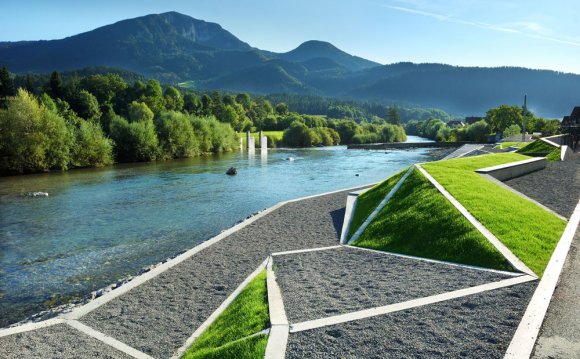
All 19 displayed
- Confer with clients, engineering personnel, or architects on landscape projects.
- Prepare site plans, specifications, or cost estimates for land development.
- Analyze data on conditions such as site location, drainage, or structure location for environmental reports or landscaping plans.
- Develop marketing materials, proposals, or presentation to generate new work opportunities.
- Inspect landscape work to ensure compliance with specifications, evaluate quality of materials or work, or advise clients or construction personnel.
- Prepare graphic representations or drawings of proposed plans or designs.
- Present project plans or designs to public stakeholders, such as government agencies or community groups.
- Integrate existing land features or landscaping into designs.
- Manage the work completed by subcontractors to ensure quality control.
- Create landscapes that minimize water consumption such as by incorporating drought-resistant grasses or indigenous plants.
- Collaborate with architects or related professionals on whole building design to maximize the aesthetic features of structures or surrounding land and to improve energy efficiency.
- Research latest products, technology, or design trends to stay current in the field.
- Inspect proposed sites to identify structural elements of land areas or other important site information, such as soil condition, existing landscaping, or the proximity of water management facilities.
- Develop planting plans for clients to assist them to garden productively or achieve particular aesthetic effects.
- Identify and select appropriate sustainable materials for use in landscape designs, such as using recycled wood or recycled concrete boards for structural elements or recycled tires for playground bedding.
- Design and integrate rainwater harvesting or gray and reclaimed water systems to conserve water into building or land designs.
- Collaborate with estimators to cost projects, create project plans, or coordinate bids from landscaping contractors.
- Prepare conceptual drawings, graphics, or other visual representations of land areas to show predicted growth or development of land areas over time.
- Provide follow-up consultations for clients to ensure landscape designs are maturing or developing as planned.
Technology Skills
Hot Technology — a technology requirement frequently included in employer job postings.
Knowledge
5 of 16 displayedAll 16 displayed- Design — Knowledge of design techniques, tools, and principles involved in production of precision technical plans, blueprints, drawings, and models.
- Building and Construction — Knowledge of materials, methods, and the tools involved in the construction or repair of houses, buildings, or other structures such as highways and roads.
- English Language — Knowledge of the structure and content of the English language including the meaning and spelling of words, rules of composition, and grammar.
- Customer and Personal Service — Knowledge of principles and processes for providing customer and personal services. This includes customer needs assessment, meeting quality standards for services, and evaluation of customer satisfaction.
- Public Safety and Security — Knowledge of relevant equipment, policies, procedures, and strategies to promote effective local, state, or national security operations for the protection of people, data, property, and institutions.
- Administration and Management — Knowledge of business and management principles involved in strategic planning, resource allocation, human resources modeling, leadership technique, production methods, and coordination of people and resources.
- Mathematics — Knowledge of arithmetic, algebra, geometry, calculus, statistics, and their applications.
- Computers and Electronics — Knowledge of circuit boards, processors, chips, electronic equipment, and computer hardware and software, including applications and programming.
- Law and Government — Knowledge of laws, legal codes, court procedures, precedents, government regulations, executive orders, agency rules, and the democratic political process.
- Engineering and Technology — Knowledge of the practical application of engineering science and technology. This includes applying principles, techniques, procedures, and equipment to the design and production of various goods and services.
- Sales and Marketing — Knowledge of principles and methods for showing, promoting, and selling products or services. This includes marketing strategy and tactics, product demonstration, sales techniques, and sales control systems.
- Biology — Knowledge of plant and animal organisms, their tissues, cells, functions, interdependencies, and interactions with each other and the environment.
- Geography — Knowledge of principles and methods for describing the features of land, sea, and air masses, including their physical characteristics, locations, interrelationships, and distribution of plant, animal, and human life.
- Clerical — Knowledge of administrative and clerical procedures and systems such as word processing, managing files and records, stenography and transcription, designing forms, and other office procedures and terminology.
- Economics and Accounting — Knowledge of economic and accounting principles and practices, the financial markets, banking and the analysis and reporting of financial data.
- Communications and Media — Knowledge of media production, communication, and dissemination techniques and methods. This includes alternative ways to inform and entertain via written, oral, and visual media.
Skills
5 of 21 displayedAll 21 displayed
Source: www.onetonline.org















